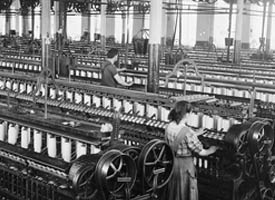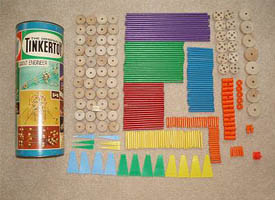- Details
 Washington National’s left fielder Jayson Werth was born in Springfield on May 20, 1979. His father was a former professional baseball player and his mother competed in the U.S. Olympic trials in the long jump.
Washington National’s left fielder Jayson Werth was born in Springfield on May 20, 1979. His father was a former professional baseball player and his mother competed in the U.S. Olympic trials in the long jump.
Werth’s successful youth career began with winning three consecutive state championships and placing third in the nation in the 1993 Sandy Koufax World Series. He followed this with an astounding career at Glenwood High School where he posted a .652 batting average and 15 home runs in his senior year.
Instead of playing collegiately, Werth was drafted by the Baltimore Orioles in the first round of the 1997 Major League Baseball draft. He remained in the minor leagues for 5 years and was eventually traded to the Toronto Blue Jays where he made his Major League debut in 2002. The following year he was traded to the Los Angeles Dodgers where he played another season, and then traded to the Philadelphia Phillies in 2007.
Ultimately flourishing with the Phillies, Werth won a World Series with the team in 2008 and was voted the “Unsung Star of the Year” in 2009. His tenure with the Phillies ended when he signed with the Washington Nationals in 2010 for $126 million. Though he has yet to win a world series with the Nationals, Werth is still putting up numbers worthy of his contract. Werth holds a career .274 batting average, 186 home runs and over 1,200 hits.
Learn more:
View Werth’s Washington Nationals bio
- Details
 According to Wide Open Spaces, Lake Shelbyville is one of the best fishing lakes in the region. Renowned for its muskie fishing opportunities, Shelbyville goes on Wide Open Spaces must-visit fishing spot list.
According to Wide Open Spaces, Lake Shelbyville is one of the best fishing lakes in the region. Renowned for its muskie fishing opportunities, Shelbyville goes on Wide Open Spaces must-visit fishing spot list.
Even if angling isn’t your cup of tea, Illinois’ many lakes and rivers offer endless opportunities to boat, swim and take in nature. If you want to get out on the water, Illinois has some new laws you should probably know about.
First, if you were born after 1997, you need a boat safety certificate to operate a motor boat.
Second, if you want to go waterskiing or tubing, you need to fly orange flags whenever anyone is in the water.
Third, Illinois has another law to crack down on drinking and boating, so make sure your boat operator stays sober.
And of course, you should always wear a lifejacket – the theme of this year’s National Safe Boating Week, which runs from May 16 to May 22.
- Details
 Whether it is grilled up in the backyard at a family barbeque or consumed at the local greasy spoon, burgers have made a lasting impression on the American conscious.
Whether it is grilled up in the backyard at a family barbeque or consumed at the local greasy spoon, burgers have made a lasting impression on the American conscious.
Illinois is by no means a stranger to the burger. No matter what kind of burger you like, and no matter what part of Illinois you are in, you can always find a good burger. To celebrate burgers, let’s look at a few different kinds of this famous sandwich and where you could go for a good one in Illinois:
The classic cheeseburger
You cannot get simpler or more classic than the ever-popular cheeseburger. Meat, cheese, lettuce, onion, pickles and tomato is all you need. It is both simple and delicious.
For this classic burger, try Burger Barge in East Peoria.
The egg-topped burger
The egg-topped burger is a new take on an old tradition. In the past couple of years, this new trend has taken off. How do you make a burger better? Put a fried egg on top, of course.
One great place to get this special type of burger is at Butcher and the Burger in Chicago.
Bacon burger
Bacon makes everything better, right? Well of course it does. There is nothing like biting into a delicious burger topped with crispy bacon.
Try Vie in Western Springs for this delectable treat.
Mushroom-Swiss burger
Mushroom-Swiss burgers are the perfect savory burger. Topped with rich Swiss cheese and sautéed mushrooms, this is a favorite of many.
You might want to try Crosstown Pub in Naperville for this one.
- Details
 On May 15, 1903, Illinois established an 8-hour work day and a 48-hour work week for children.
On May 15, 1903, Illinois established an 8-hour work day and a 48-hour work week for children.
The pressure to change the law was pushed by women reformers who realized there was a huge problem. Before then, business leaders, organized labor and other groups expressed their concerns but never found a way to act on them. A group called the Woman of Hull House was then formed.
These women would meet to plan social reform and regulate child labor. They promoted education for children instead of working and voiced their opinions to anyone who would hear them. The group and other reformers came together to focus on the family structure and claimed if a child was neglected or abused it would not only be an injustice but endanger the future of the country.
Reformers also proposed other laws to get children out of factories and into schools and set up recreational areas and education programs.
It all worked out in 1903 when legislation was proposed requiring children to bring a statement of classroom attendance from school authorities. Working hours were also reduced to eight a day, 48 a week.
Learn more:
Chronology of Illinois History
Women and the Anti-Child Labor Movement in Illinois
- Details
 The famous toy construction kit for children was created in Evanston in 1914 by Charles H. Pajeau, Robert Pettit, and its name sake, Gordon Tinker. Although it was not an immediate success, the toy would soon take off, selling over a million sets after just a few years.
The famous toy construction kit for children was created in Evanston in 1914 by Charles H. Pajeau, Robert Pettit, and its name sake, Gordon Tinker. Although it was not an immediate success, the toy would soon take off, selling over a million sets after just a few years.
Tinker Toys consist of a wooden spool about 2 inches in diameter with holes drilled in the side at every 45 degrees. Combined with varying lengths of sticks to connect and build, the toy was designed on the Pythagorean progressive right triangle. While the original toy had had natural wooden sticks, designers began coloring them in 1950 with each color being a different length.
Tinker toys have been used to make complex displays and machines. From Ferris wheels to tic-tac-toe-playing computers, the toy has proved itself versatile and innovative.
Learn more:
From Tinkertoy to Computer Programming: Great Moments in Chicago Toys – Chicago Mag
Classic Toy Museum – Tinker Toys





